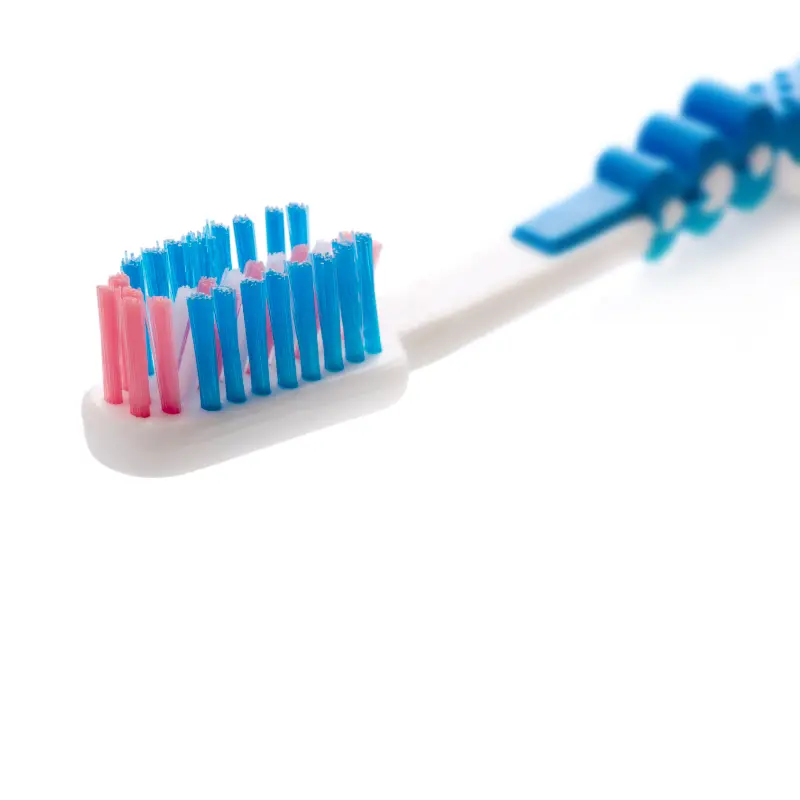Periodontics
Maintaining Healthy Gums With Dr. Raj
Your gums are a crucial component of your oral health. That’s why it’s essential to take good care of them. Otherwise, you increase your risk of developing gum disease, a harmful infection that can wreak havoc on your smile and eventually lead to tooth and bone loss if left untreated.
Explore our guide to learn more about gum disease and how you can prevent it.
What Is Gum Disease?
Gum disease is a dangerous condition that affects roughly half of American adults over 30. The primary cause is inadequate oral care — that’s why it’s so important to brush and floss every day and visit Dr. Raj for regular checkups twice a year.
When your smile doesn’t get the proper care, it allows bacteria to accumulate in your mouth and form sticky deposits on your teeth called plaque. When plaque isn’t removed right away, it can harden to form tartar, a mineral deposit that bonds with your tooth enamel.
The bacteria that cause gum disease feed on tartar, but you can’t get rid of tartar using a toothbrush. Fortunately, our dental hygienist will safely remove tartar when you come in for your dental hygiene visits.
Types of Gum Disease
There are two stages of gum disease:
- Gingivitis — During this early stage of gum disease, your gums will start to look red and swollen. They may also feel tender and bleed easily. The sooner Dr. Raj discovers gingivitis, the easier it is to treat. But if you don’t get the necessary treatment, your condition can progress to a more severe stage.
- Periodontitis — At this point, your gums begin to pull away from your teeth, forming infected pockets around the base of your teeth. Eating can become painful and your breath may start to smell. Without treatment, your teeth could loosen and eventually start to fall out.
Dr. Raj Treats Gum Disease
When you seek treatment while your infection is still in the gingivitis stage, you have a good chance of eliminating it quickly. In fact, gingivitis can often be reversed with simple measures such as improved oral care.
If your gingivitis doesn’t respond to improved oral hygiene, Dr. Raj may recommend a deep cleaning, often referred to as scaling and root planing therapy.
We recommend seeking treatment as soon as possible, since periodontitis is more difficult to treat than gingivitis. Fortunately, we feature effective remedies for gum disease that don’t require surgery.
Ask Dr. Raj About Gum Disease
If you have any questions about gum disease, don’t hesitate to ask Dr. Raj. When it comes to your oral health, it’s never a bad idea to exercise caution and seek professional assistance.
Call (610) 358-5690 today to schedule your consultation with Dr. Raj. We have solutions to keep your smile healthy and shining bright.
Frequently Asked Questions
What is periodontal disease (periodontitus)?
How do I reverse periodontal disease?
If gum disease is left to progress for too long, it can attack the supportive structures, causing the teeth to become loose and even fall out. At this point, it is usually too late to reverse periodontal disease. That’s why early detection and treatment are essential for keeping your smile healthy.
How do I improve my gum health?
To improve the health of your gums, you’ll want to:
- Brush regularly – Brushing your teeth at least twice per day and at a 45 degree angle will provide the best results. Be sure to replace the toothbrush every three to four months.
- Choose the right toothpaste – Look for toothpaste containing fluoride and the ADA seal of approval.
- Floss daily – Flossing daily will remove plaque from the teeth and gums. If plaque builds up, it turns into tartar and can only be removed by a dentist. If left untreated, tartar may lead to gum disease.
- Rinse your mouth at the right time – Rinsing your mouth after eating can help to remove food which leads to plaque buildup, however, rinsing your mouth after brushing your teeth removes fluoride which helps prevent cavities.
- Stop smoking – Smoking increases your risk for gum disease because it weakens your immune system and therefore you’re more susceptible to infections.
- Avoid foods such as carbonated or sugary drinks, sticky candies, and starchy foods that have a tendency to stick to your teeth.
- Incorporate these foods into your diet:
- Fruits and vegetables rich in fiber to help keep the mouth clean
- Black and green teas reduce bacteria
- Dairy products and sugar free gum increase saliva production
- Foods that content fluoride such as seafood and some poultry
- Schedule regular appointments with Dr. Raj to ensure your gums are healthy and free of infection.

